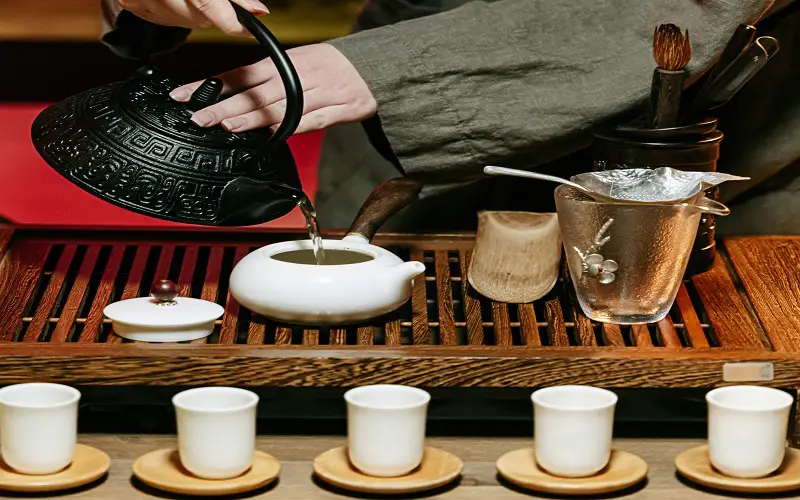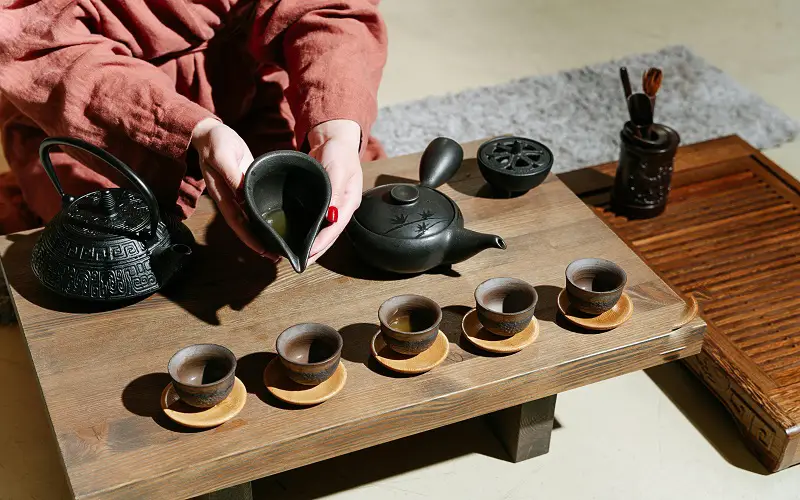Introduction
Are you tired of crowded tourist destinations and popular swimming pools? If you’re looking for a unique and secluded swimming experience, hidden natural swimming pools might be just what you need. These hidden gems are often tucked away in lesser-known destinations, offering an escape into nature’s paradise. In this article, we’ll explore how to find these hidden natural swimming pools and uncover some of the most breathtaking locations around the world.
Why Hidden Natural Swimming Pools?
1. The allure of secluded paradises
Hidden natural swimming pools have a special allure due to their secluded and untouched beauty. These secluded paradises offer an escape from the hustle and bustle of popular tourist destinations, allowing you to relax and connect with nature in a tranquil setting.
2. Escape from crowded tourist destinations
If you’re tired of fighting for space in overcrowded swimming pools, hidden natural swimming pools provide a refreshing alternative. Unlike popular tourist destinations, these hidden pools offer a more private and intimate swimming experience, where you can bask in the beauty of nature without the crowds.
Finding Hidden Natural Swimming Pools
1. Researching lesser-known destinations
a. Go beyond popular travel websites
When searching for hidden natural swimming pools, it’s important to go beyond the information provided by popular travel websites. While these websites can be a great starting point, they often focus on well-known tourist attractions. Instead, dig deeper by exploring lesser-known destinations that may be hiding hidden natural swimming pools.
b. Explore local travel blogs and forums
Local travel blogs and forums are a valuable resource when it comes to uncovering hidden natural swimming pools. These platforms provide insights from real travelers who have experienced these hidden gems firsthand. Look for personal stories, recommendations, and tips shared by locals or experienced travelers who have ventured off the beaten path.
2. Seeking recommendations from locals
a. Interacting with locals during your travels
One of the best ways to discover hidden natural swimming pools is by connecting with locals during your travels. Strike up conversations with locals and ask them about any hidden gems in the area. They often have insider knowledge that may not be readily available online.
b. Engaging with the local community online
If you’re planning your trip in advance, it’s beneficial to engage with the local community online. Join travel groups or forums specific to your destination and ask for recommendations. Locals can provide valuable insights and help you uncover hidden natural swimming pools that may not be well-known to tourists.
3. Utilizing social media
a. Following Instagram influencers and travel accounts
Social media platforms, especially Instagram, can be a treasure trove of hidden natural swimming pool discoveries. Follow travel influencers and accounts that focus on outdoor exploration. These influencers often share their experiences and uncover hidden gems that you might not find elsewhere.
b. Searching hashtags related to outdoor swimming
Hashtags can be a powerful tool when it comes to discovering hidden natural swimming pools. Search for hashtags like #hiddenpools, #naturalswimming, or #[destination]swimming to explore posts from fellow travelers who have stumbled upon these hidden gems. Don’t forget to read the captions and comments for location details and tips.
Uncover Hidden Natural Swimming Pools:
Now that you have the tools to find hidden natural swimming pools, let’s explore some breathtaking locations around the world:
1. Blue Lagoon, Grindavik, Iceland
Vibrant blue waters and geothermal spa experiences await you in the Blue Lagoon. This iconic natural pool in Iceland offers a unique swimming experience surrounded by volcanic landscapes.
2. Hamilton Pool Preserve, Dripping Springs, Texas, United States
Located just outside of Austin, Hamilton Pool Preserve is a hidden oasis in the heart of Texas. This natural swimming hole features a stunning 50-foot waterfall, lush vegetation, and a peaceful atmosphere.
3. The Blue Hole, Ocho Rios, Jamaica
Escape to the crystal clear waters of The Blue Hole in Jamaica. This hidden gem is tucked away in the mountains and offers stunning turquoise waters perfect for swimming and cliff jumping.
4. Fairy Pools, Isle of Skye, Scotland
Experience a magical swimming adventure in the Fairy Pools on the Isle of Skye. These enchanting natural pools offer breathtaking views of the surrounding mountains and crystal clear waters.
5. Cummins Falls State Park, Tennessee, United States
Head to Cummins Falls State Park in Tennessee for a hidden swimming paradise. This picturesque waterfall and swimming hole are surrounded by lush greenery, creating a serene and peaceful atmosphere.
6. Dragonara Cave, Malta
Discover the hidden gem of Dragonara Cave in Malta, where stunning turquoise waters blend with incredible rock formations. This secluded swimming spot is perfect for those seeking a unique and unforgettable experience.
7. Fingal’s Cave, Staffa, Scotland
Embark on an adventure to Fingal’s Cave on the Isle of Staffa in Scotland. This natural marvel features majestic hexagonal basalt columns and a shimmering sea inlet, creating a mystical swimming experience.
8. Grotta Giusti, Tuscany, Italy
Indulge in a relaxing and rejuvenating swim at the Grotta Giusti in Tuscany. This natural hot spring cave offers thermal waters and unique underground surroundings for a truly enchanting experience.
9. Poço Azul, Bahia, Brazil
Explore the mesmerizing Poço Azul in Bahia, Brazil. This hidden natural pool boasts crystal clear waters, inviting you to take a refreshing swim surrounded by lush vegetation.
10. Queen’s Bath, Kauai, Hawaii
Visit Queen’s Bath in Kauai, Hawaii, for a hidden swimming paradise. This natural pool is formed by volcanic rock and offers awe-inspiring views of the ocean. However, be aware of changing tides and currents for a safe swimming experience.
Preparation and Safety Tips
1. Check local regulations and restrictions
Before visiting any hidden natural swimming pool, it’s important to check local regulations and restrictions. Some pools may have limited access or specific visiting hours to protect the environment and ensure visitor safety.
2. Be mindful of wildlife and environmental impact
When enjoying hidden natural swimming pools, it’s crucial to be mindful of wildlife and the environment. Avoid disturbing or harming any wildlife and follow guidelines for preserving the natural ecosystem. Leave no trace and carry out any trash or belongings you bring in.
3. Pack essentials for a comfortable experience
Make sure to pack essential items for a comfortable swimming experience:
a. Swimwear and towels
b. Sunscreen and insect repellent
c. First aid kit
Conclusion
Hidden natural swimming pools offer a unique and refreshing way to connect with nature and indulge in a secluded paradise. By doing thorough research, seeking recommendations from locals, and utilizing social media, you can uncover breathtaking hidden gems around the world. Remember to prioritize safety, respect the environment, and pack the necessary essentials for a memorable experience. Start your journey to these hidden natural swimming pools and dive into moments of pure bliss and natural beauty.
FAQ
Q: Are hidden natural swimming pools safe to swim in?
A: Hidden natural swimming pools can be safe to swim in, but it’s important to exercise caution. Always check local regulations, be aware of changing weather conditions, and consider your swimming abilities. Follow safety guidelines and remain vigilant to ensure a safe and enjoyable experience.
Q: How do I find hidden natural swimming pools in my area?
A: To find hidden natural swimming pools in your area, research lesser-known destinations, engage with the local community online, and utilize social media platforms. Interacting with locals during your travels is also a great way to uncover hidden gems.
Q: What should I pack for a trip to hidden natural swimming pools?
A: When packing for a trip to hidden natural swimming pools, essentials include swimwear, towels, sunscreen, insect repellent, and a first aid kit. It’s important to be prepared and have the necessary items for a comfortable and enjoyable swimming experience.









